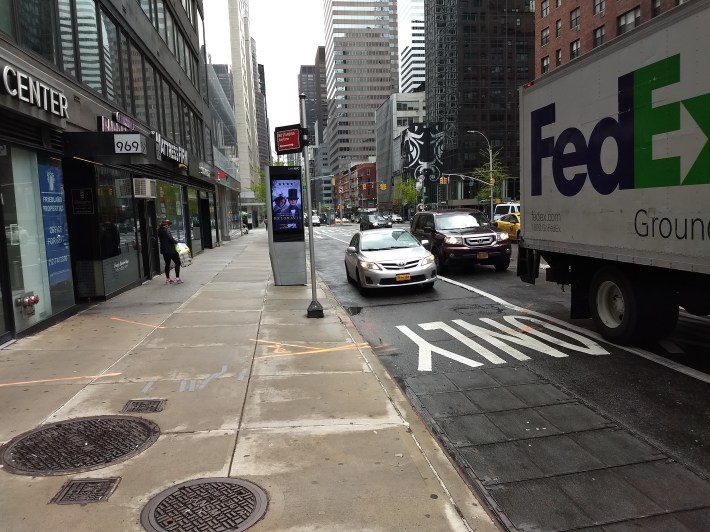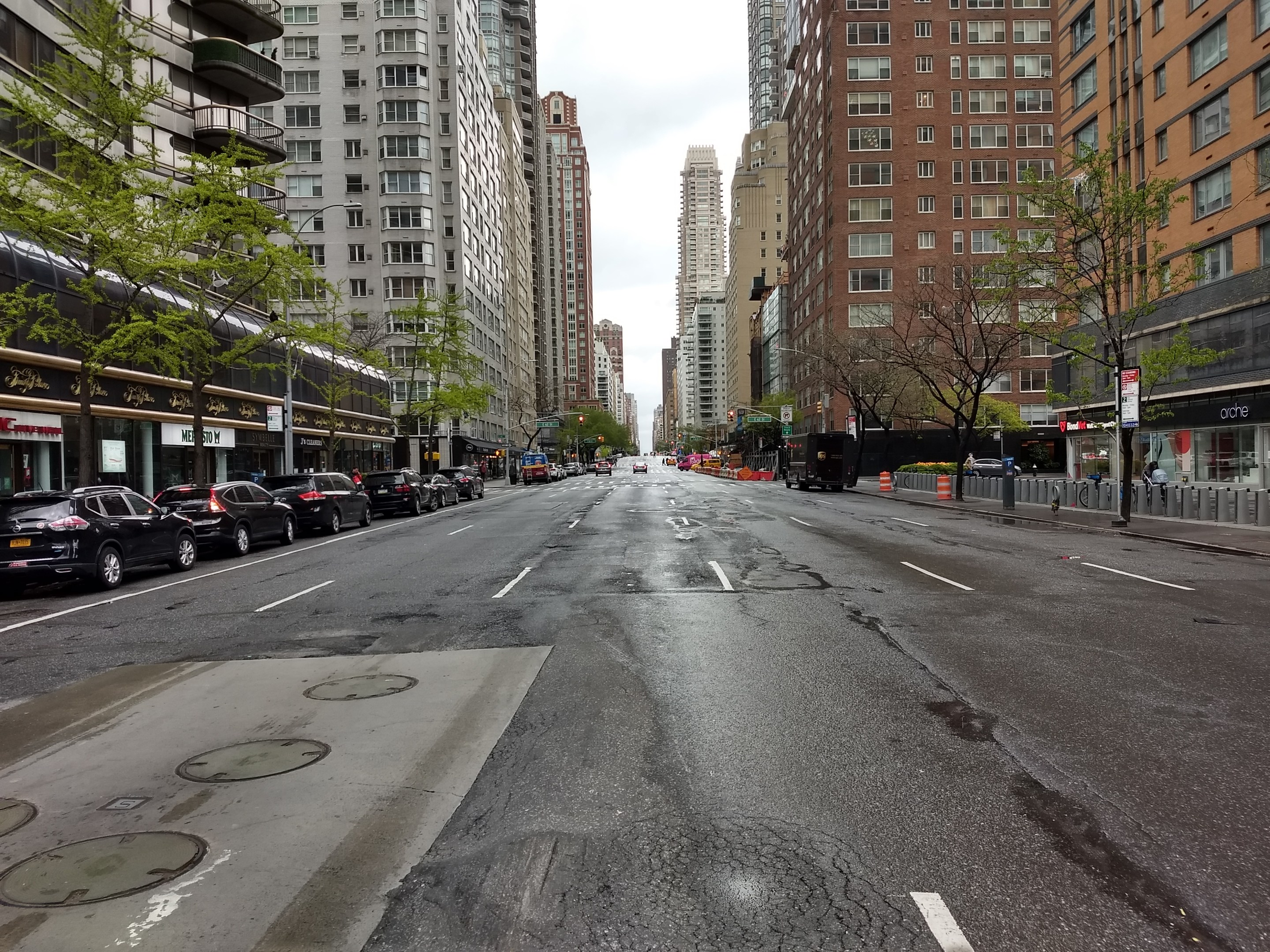Like with most avenues and streets in New York before coronavirus, Third Avenue on the East Side of Manhattan was long known by locals as a nightmare for everyone who used it. The wide avenue, home to rowdy bridge traffic below the 59th Street Queensboro Bridge and runway-like stretches of lightly used asphalt above it, was a hub for crashes and bad driving as long ago as 2014, when the then-new Vision Zero named it as a priority corridor.
From my bedroom window in Lenox Hill I’ve heard and seen the aftermath of many crashes at 60th and Third alone (this after Vision Zero improvements were put in place there). On a bike, the avenue can feel like a cruel test of skill, judging the ability of riders to sense speeding traffic and, when necessary, to shrink themselves as much as possible to get out of the way of motorists.
That was the situation before traffic in the city cratered because of the coronavirus restrictions, and, in keeping with the maxim of how disasters reveal the true character of things, those problems have only gotten worse.
As Streetsblog has reported, speeding has reached alarming highs on city streets because the lack of traffic has emboldened car drivers to rev out on the long stretches. On Third Avenue — a straight, north-south road — those conditions exist on steroids.
The 70-foot-wide road, even though it is governed by traffic lights, tempts reckless drivers to drive as fast and stupidly as they please, especially at night when traffic is almost non-existent. Traffic enforcement? Ha!
Now, every night, I can hear fast-revving engines racing uptown toward Carnegie Hill, the drivers apparently cosplaying characters from a “Fast and Furious” movie. Even during daylight, they find opportunities to act like idiots at others’ expense; for example, recently a driver turning the wrong way down 59th Street toward bridge traffic almost collided with a bus on which I was riding.
For pedestrians, the small-ish amount of sidewalk space, which didn’t seem like an issue before the advent of social distancing, now presents a massive headache. Narrow sidewalks are a problem on most major avenues in heavily commercial East Midtown, most clearly on Lexington Avenue’s almost tight-rope thin walkways, but at least on Lexington and Second avenues there’s a parking lane and a bus lane you can occasionally dodge into.

On Third Avenue between 55th and 59th Streets, there is simply nowhere to go because on the east side of the street the sidewalk abuts the turning lanes for bridge traffic. That forces pedestrians either to stomach getting within six feet of other walkers or to dodge into an active turning lane used by high-speed drivers — a situation ripe for bad things.
All these elements have made a street that was already a chaotic mess even more so, to the point that it’s a genuine miracle to me that someone hasn’t died from a crash since the lockdown started.
It’s putting everyone who uses the street at grave risk, from pedestrians who have to dart into bridge-bound traffic just to maintain the six feet of separation needed to avoid getting sick, to cyclists who have to contend daily with wanna-be NASCAR drivers, to other road users in general, from drivers who actually follow the speed limit to the countless ambulance crews that have used Third Avenue for years before the coronavirus as a speedy way to get to the multiple hospitals in the area.
It’s a situation that the Department of Transportation must address, preferably through bollard sidewalk widenings (especially in the now lightly used turn lanes), lane restrictions, truly protected bike lanes, or (preferably) all of these.
Unlike most other situations where streets were finally made safe for everyone, it had better not take a death for Mayor de Blasio (an Upper East Side resident) to do something.
Liam Jeffries is a safe-streets activist and freelance writer in Manhattan.






